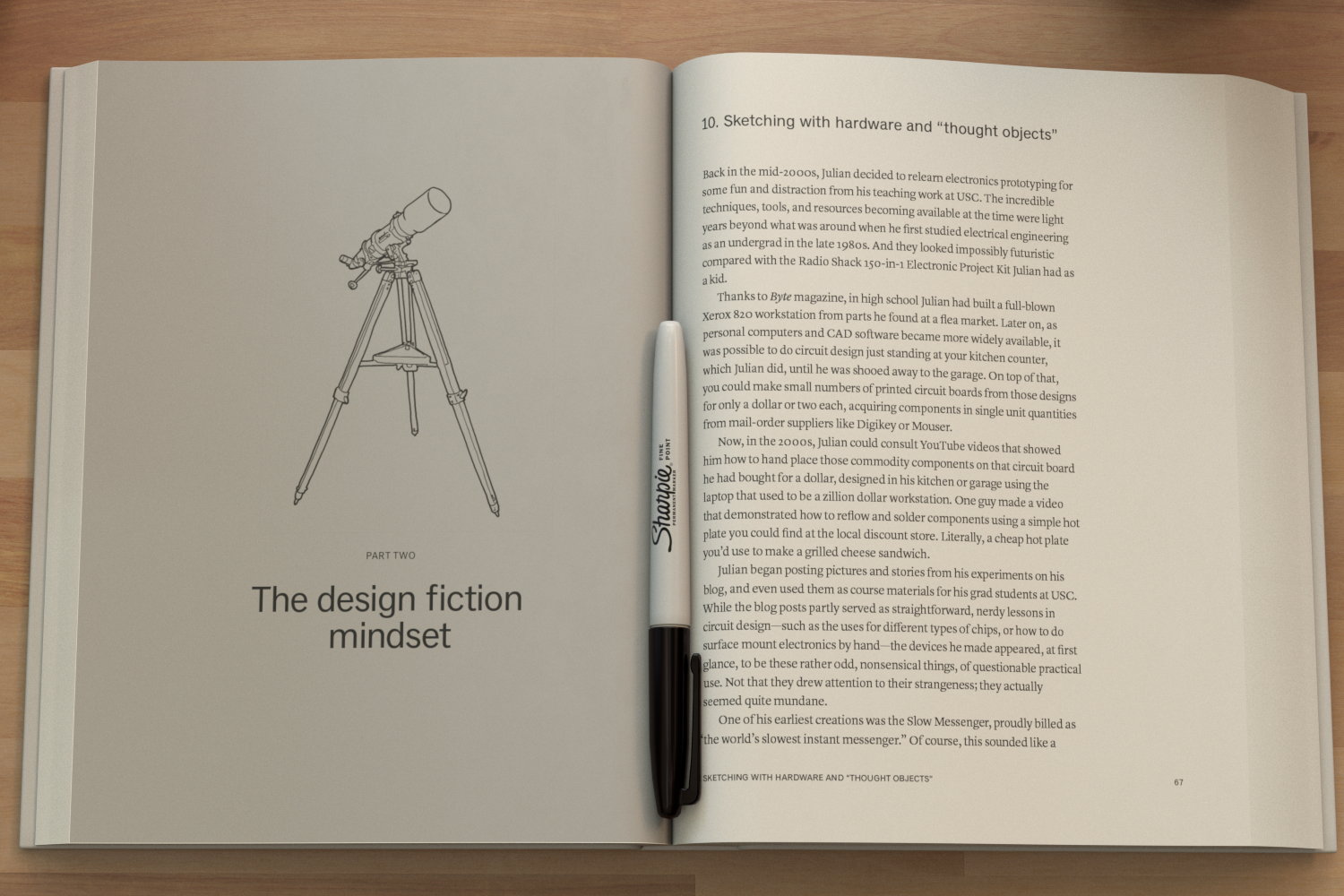What Is Design Fiction

Contributed By: Julian Bleecker
Published On: Wednesday, September 28, 2022 at 13:09:58 PDT
Summary
Uncover the essence of Design Fiction and its profound impact on imagining future possibilities through objects. Dive into a thought-provoking discussion on how design fiction transcends traditional prose, offering a fresh perspective on envisioning the future. Discover our new book, 'The Manual of Design Fiction,' for a comprehensive guide on redefining creativity and innovation in design. Explore the historical roots of design fiction and join us in reimagining the future through tangible artifacts.
- I suppose it’s a reasonable question.
- It also becomes a bit tiresome, but that’s my problem.
- It also becomes a great way to refine what I think about when I think about Design Fiction.
- Really!
- This morning I stumbled across this Medium Post that had this hero image. (Yes! This morning!)
- And then I did a bunch of work and finally got out to take the dog for a fun walk.
- On the walk — where all the best thinking happens (or bicycle ride, natch..) — something hit me:
- The image standing in for ‘design fiction’ is from 1967.
- Wait. What? How could something have been design fiction before the term (arguably) was introduced as an idiom at a particular point in time under a particular set of circumstances with a specific set of motivations and ambitions?
- Is it design fiction? Did someone ask the TV Helmet guy, Walter Picher? Like, ‘Hey Walter. Is that design fiction?’
- Walter: ‘Is it what?? Never heard that. What did you say, ‘design fiction’? I have no idea what that is.. Look — I made a TV Helmet. It’s a bit of agitprop I did in the late 60s and a kinda..you know..reaction to the “political art” that was called for around that time. You know..I was of the opinion that this kinda political or social criticism should start directly with the new media—television and telecommunications—which were just coming into their own at the time. I don’t know about this design fiction. Tell me what the heck that is..”
- Now, I don’t care at all that the Medium post’s author just kinda takes something that looks peculiar and ‘design fiction-y’ and says it’s an exemplar of design fiction 41 years after the idiom ‘design fiction’ was (arguably) first articulated. Not at all.
- (In fact, I’m embarrassed to say that I couldn’t bear finishing the article for fear of spending the rest of the day writing a response when I really should be doing something else. Oh. Wait. Is this a response? I suppose it is. Damnit..)
- It’s more the point that the idiom ‘design fiction’ is kinda thrown around to fit what smells/tastes/looks/feels like something weird, most especially if it’s prose fiction about a thing, or prose fiction that’s actually a ‘user journey’ or ‘scenario’, to use the product designers argot. (It’s also a bit of thin scholarship to just take someone else’s thing, say it means something, and not really get into what that person has to say on their own about the thing. Kinda fake news-y sort of practice.)
- But, why am I making this point?
- Well, we have a book coming out very soon. It’s called ‘The Manual of Design Fiction’ where we spell out what we mean by design fiction, and what we mean by it is a wholly fresh take on the ways in which we can re-invigorate our sense of what it is to imagine possibility through objects.
- Prose is beautiful, remarkable, delicate in the way it can activate evoke and shape consciousness. We’re not anti-prose. (My library is bursting.)
- We just feel that designed objects — the furniture of all sorts, shapes, sizes, motivations, desires, dreams, ambitions, manufacturing methods, processes, materials, organic, analog, paper, electronic, printed & folded, spindled and mutilated — are powerful ways of understanding who were were, who we are, who we can become. “Things” are the symptoms of existence that cannot speak in the way prose speaks and thus reflect a different kind of valence of meaning.
- And I think that is significant enough to distinguish ‘design fiction’ from ‘prose’. (And it’s ‘fiction’ because these are things distinct from more quotidian notions of designed objects, which are often either art or the expression in material form of commercial purposes. They are plainly objects that imply the worlds from which they came.)
- That’s what prose does as well of course, and prose has been a significant and invaluable way of expressing intent, reflecting on what has been, what is happening, what could happen, what we imagine, etc.
- Material artifacts can do likewise, in addition to prose. Not instead of. In addition to. They can even go along with the $250,000 report McKinsey prepared for you and shoved into a 3 ring binder or PowerPoint Deck. (Personally, I’d take the design fiction artifact, but that’s me.)
- Still curious about design fiction? Definitely get the book The Manual of Design Fiction, but also check out this video Nick and I made. Couldn’t be simpler! ‘What Is Design Fiction’
Loading...